Croatia Through the Eyes of a Digital Nomad: Dubrovnik’s Lazareti Backstory Still Resonates
October 28, 2020 - Freelancers Week may be over, but digital nomads are still making connections with one another and with coworking spaces, including the historic Lazareti in Dubrovnik.
My first experience with European Freelancers Week (#EFWeek2020), which just wrapped up, was a whirlwind from beginning to end. I worked in three different coworking spaces, learned how to open and operate an obrt, and socialized with a group of fellow “remote” females. From all this networking, a new project landed on my plate and began the same week. Awesome! The most memorable experience though was working on a kick-off event—the Dubrovnik for Digital Nomads conference.

(When epidemics spread rampantly in the 14th and 15th centuries, the Dubrovnik Republic took strict measures to organize sanitary and public healthcare services throughout the region. It’s no coincidence that epidemics of infectious diseases erupted and the period was characterized by a boom in trade.)
Independent work and workspace
Freelancers Week, the parent of #EFWeek, is a celebration of independent professionals and coworking spaces. The conference delivered on both, as a salute to Croatia’s impending digital nomad visa and with an offer of free coworking for the week. The event and the coworking were located in a place of historic consequence—Dubrovnik’s famed Lazareti. Ths row of buildings on the city’s waterfront is notorious as a former quarantine site. Hello, pandemic?
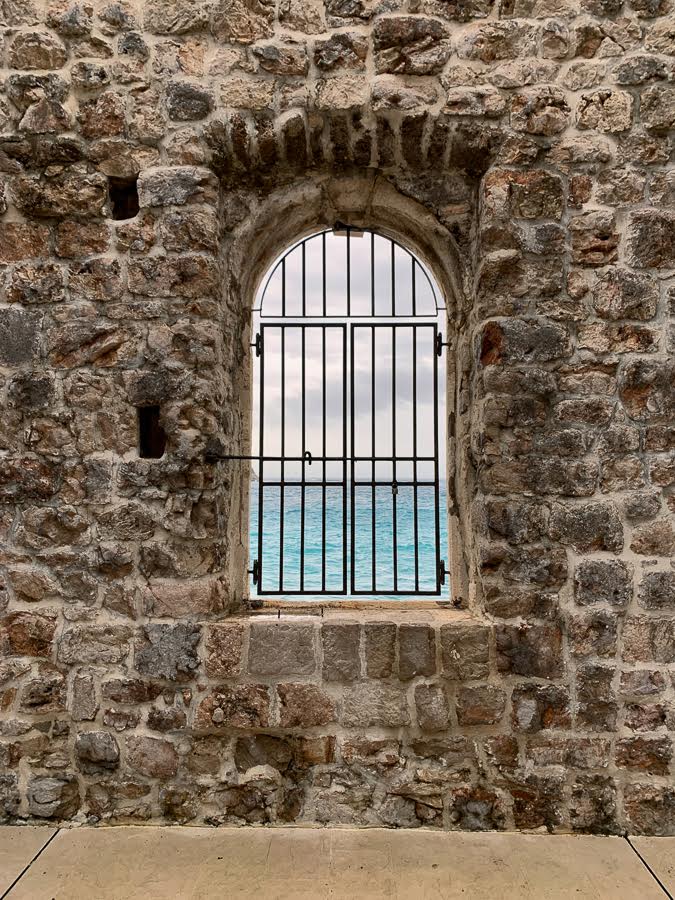
(Small windows in each courtyard were once doors where goods were unloaded from ships, directly into the lazaretto for holding.)
Quarantine origins
Poking around the buildings before the conference, I noticed an art exhibit on the walls. It was actually an illustrated account of the city’s quarantine origins. Dubrovnik was the first state in the world to institute an official quarantine system to protect its people against infectious diseases. “Our Lord God sent a terrible, unheard of judgment on the whole world…” The opening sentence of the prologue wasn’t exactly factual, but it got me wondering if the same God is in charge today, 600+ years after this story began. Don’t get me started…
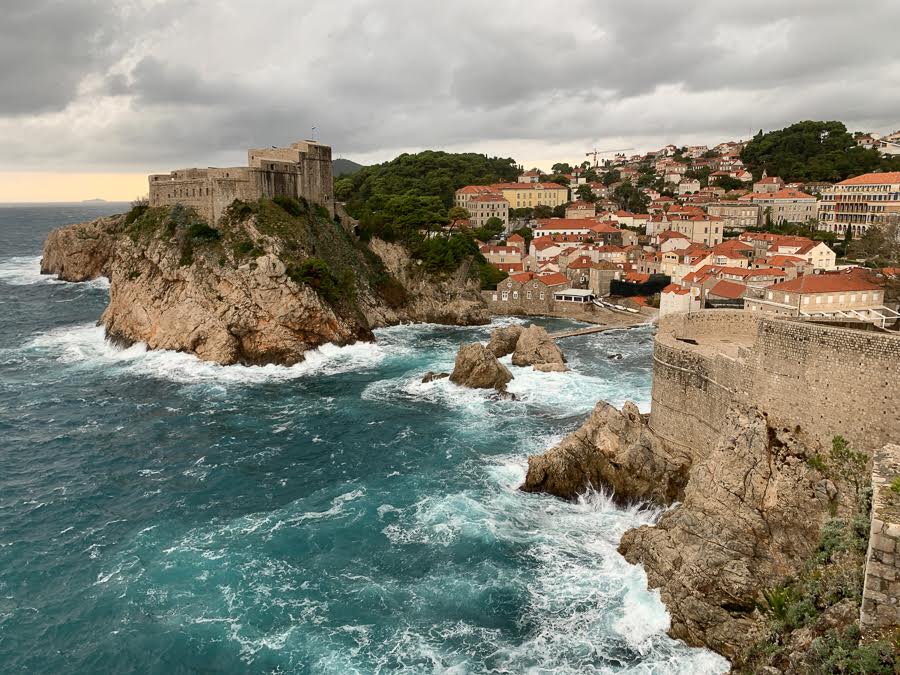
(People who received a prison sentence for violating quarantine restrictions were held at Lovrjenac Fortress, just outside Dubrovnik’s city walls and the Pile Gate.)
Epidemics across the Mediterranean
Raging plague and cholera epidemics were common from the 14th to 18th centuries across Europe and Asia. During these Middle Ages, Dubrovnik was a thriving maritime Republic that received people and goods from all over the world. In 1348, the Black Death plague decimated the population and killed roughly one-third of its citizens. Although infectious diseases were largely attributed to poor hygiene and poor nutrition, treatments were ineffective. It was thought that isolating people who were infected would stop the spread. Three decades later, in 1377, the Republic announced quarantine measures. They targeted all travelers, merchants, sailors, and goods arriving from "suspicious lands." An isolation period of 40-days was mandated and only when a person was proven healthy would they be allowed into the city.
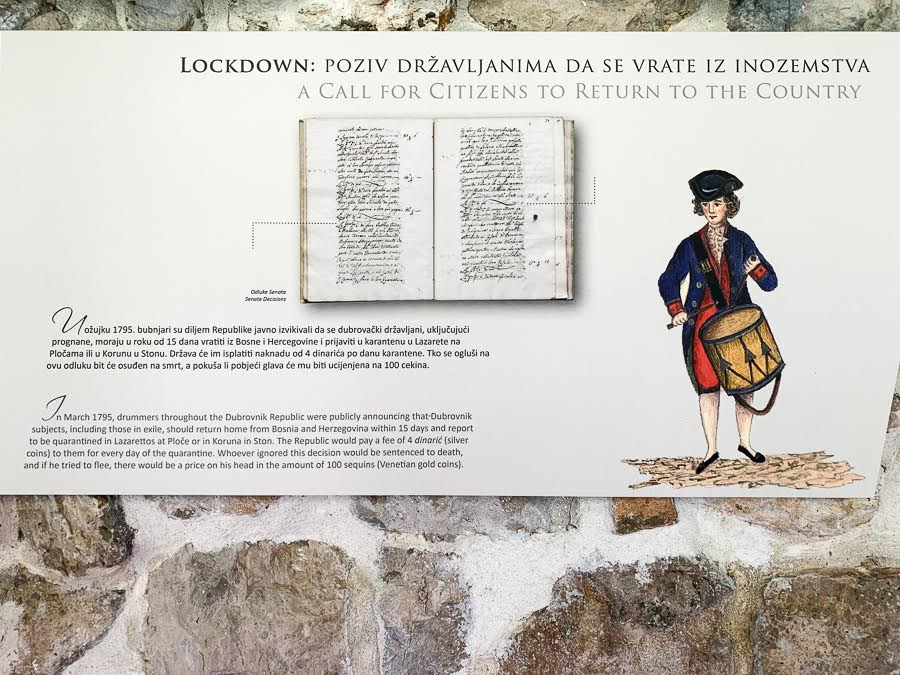
(In 1795, drummers in the Dubrovnik republic publicly announced that subjects in exile should return home and report to quarantine. The Republic would pay 4 dinarić (silver coins) for every day of quarantine. Whoever ignored this would be sentenced to death. If he tried to flee, a price would be put on his head of 100 sequins (Venetian gold coins).)
Lazarettos
The first lazarettos—quarantine stations, were built on remote, uninhabited islands just off the coast—Bobara, Cavtat, Mrkan, and Supetar. Over time, as others were constructed on different islands, including Lokrum, they became complex institutions. Scribes, guards, gravediggers, cleaners, priests, barbers, and healthcare officers were employed. The latter implemented quarantine restrictions and supervised compliance. Penalties for rule-breakers ranged from fines (100 ducats), to prison sentences, severe corporal punishment, and the threat of being shot. Seamen and their families received special dispensation. Since sailors typically had to return to sea immediately after their quarantine, wives and families were allowed to join them and quarantine together at the lazarettos.
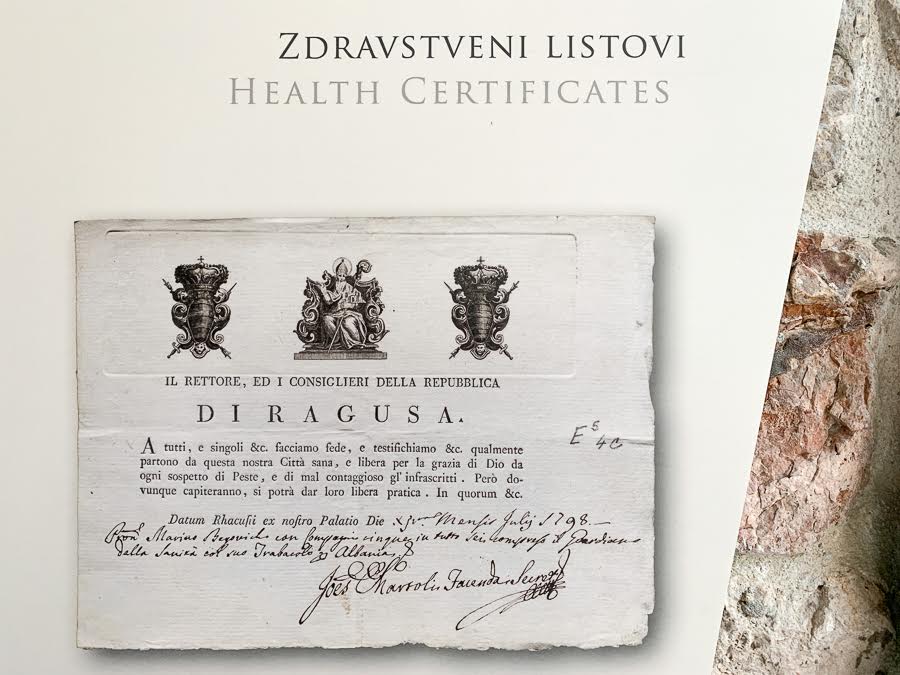
(In cooperation with the Health Office, the Republic issued health certificates to confirm that passengers in Dubrovnik had undergone the prescribed quarantine, or to state there was no infection in the area at the time of their travel.)
Safety measures
Reading about various safety measures—from hundreds of years ago mind you, they were surprisingly familiar. There was contact tracing, decontamination of food and animals, disinfection of ships and buildings, self-isolation, lockdown, border closure, contactless payment, distance rules, prohibition of public gatherings, and more. Contact tracing in the 1600s? Yep. People reported who they had contact with and also what they saw and heard about others. They snitched! Supposedly, it worked, and the plague of 1691 was snuffed out in three months. Contactless payment? Yes, again. Place your ducats on the counter and the person on the other side swept them into a drawer with a stick.
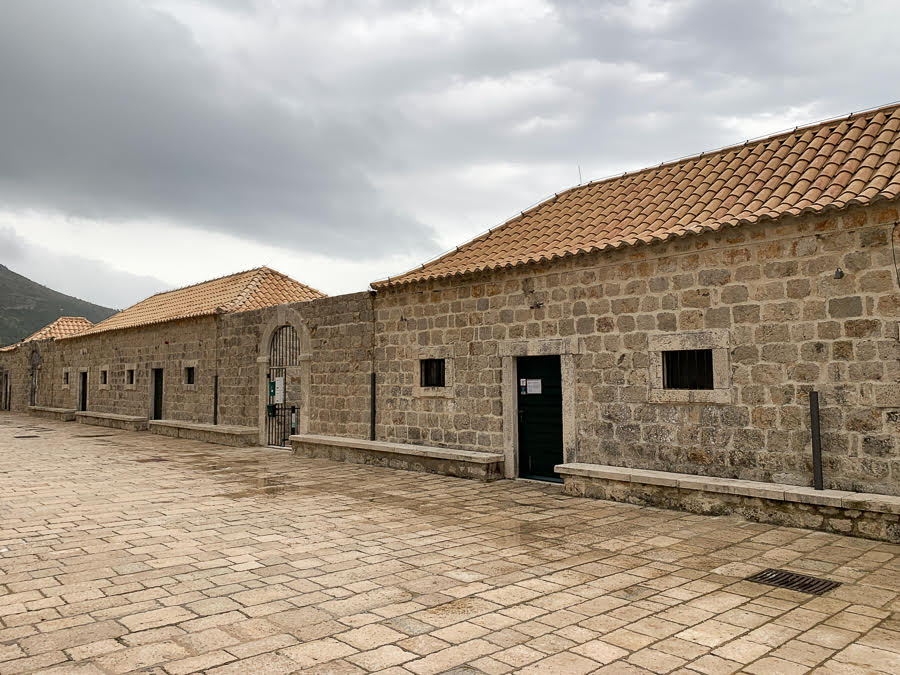
(Buildings along the upper courtyard of the lazaretto were once holding facilities for travelers to quarantine before embarking. Today they house various businesses and artistic ventures.)
Lazareti
The Lazareti, located near the Ploče Gate, was completed in 1647. Its location is significant—situated next to Dubrovnik’s old port and the city’s main entry point. As my feet walked through this multi-story lazaretto, consisting of eight buildings and five interconnecting courtyards, I noticed the architecture that once sheltered people, goods, and caravans from afar. From the shared, upper courtyard at street level, large staircases lead to the individual, lower courtyards at sea level. From the top of each staircase you get an expansive view of the sea, the city walls, and the old town. Peering down, a single, barred window in each courtyard gives you a sweet view of the water. This creates a neat “picture in picture” visual effect yet, standing next to the window there’s an immediate awareness of being behind bars. You’re on the inside looking out.

(The lazarettos, consisting of eight buildings and five courtyards, were renovated in 1623 from the sea side in order to enable the landing of large boats. The complex included warehouses for goods and livestock and lodgings for the extended stay of merchants and travelers in isolation.)
Creative Quarter
Physically being in a place whose historic narrative of plagues parallels our current situation with covid-19 in many ways, gave me a surreal feeling of connection. It was a sense of “we’ve been here before, things will get better, I’m not alone.” It’s clever marketing to host a public event and a coworking space in a former isolation facility—during a pandemic no less! As a remote worker, I’m isolated every day at my home “office,” aka my kitchen table. This past week was a breath of fresh air, quite literally, at the Lazareti. I’m glad for European Freelancers Week and the opportunity to get new perspective.
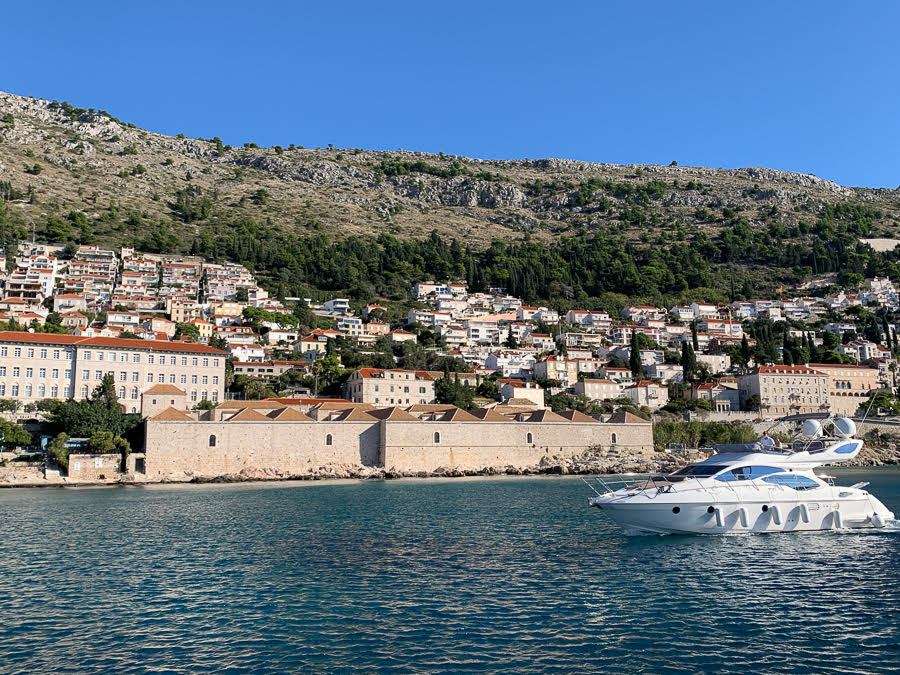
(In the 17th century, Dubrovnik was the largest merchant transit center on the Adriatic and the lazarettos were one of the best organized quarantines in the Mediterranean.)
Story and photographs ©2020, Cyndie Burkhardt. www.photo-diaries.com.
You can follow the latest from Cyndie's column, Croatia Through the Eyes of a Digital Nomad here.
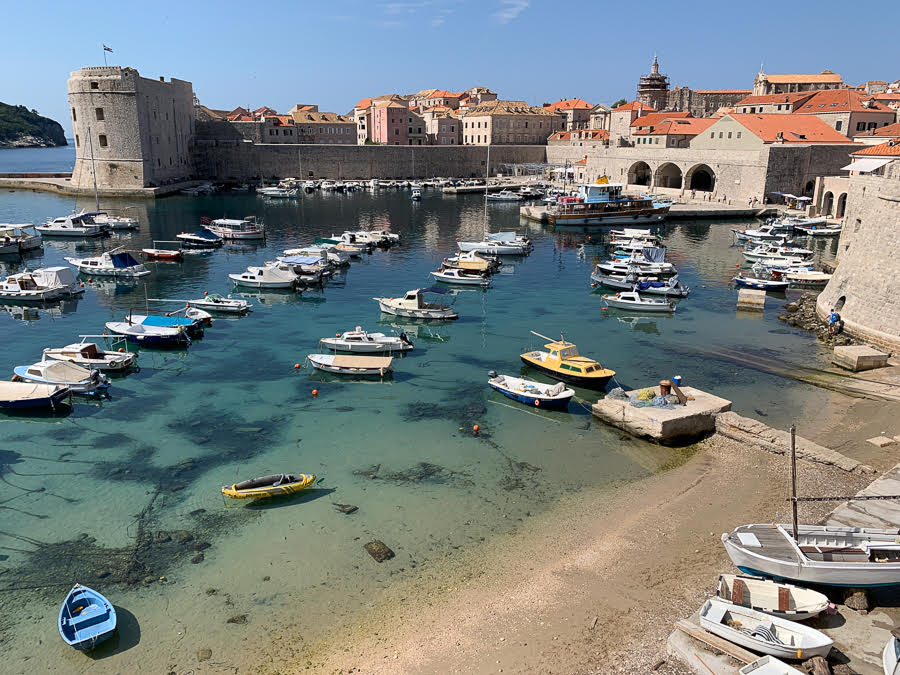
(From the upper courtyard, you get an expansive view of the harbor and the old town.)
For the latest news about digital nomads in Croatia, including that sought-after nomad visa, check out the dedicated TCN digital nomad news section.
Learn more about the Dubrovnik for Digital Nomads conference.
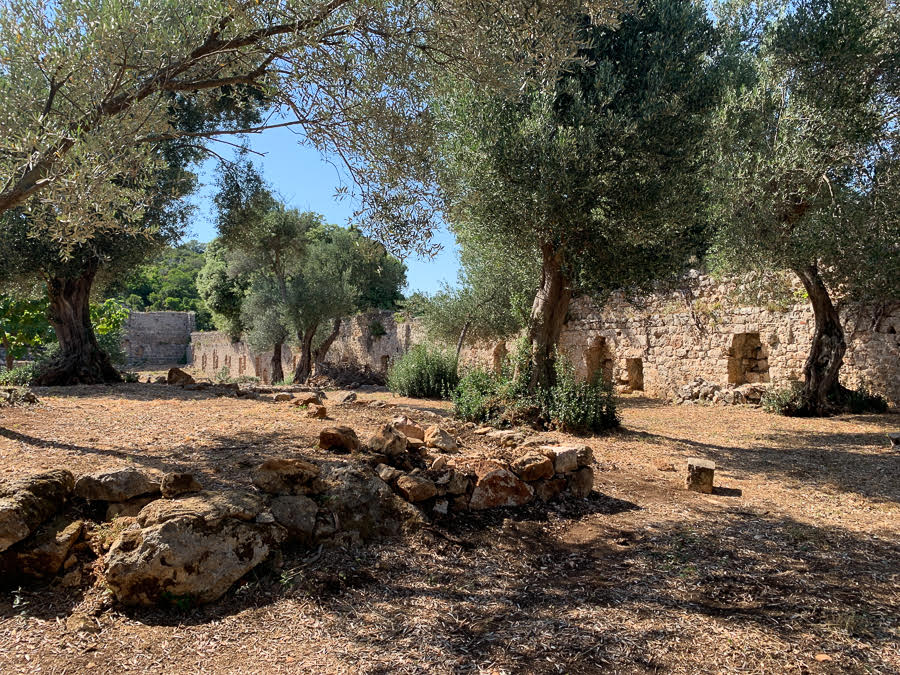
(A large lazaretto on Lokrum, under construction in 1534 was never finished but its remains are still visible. Benedictine monks planted an olive grove in the central courtyard.)
Croatia Through the Eyes of a Digital Nomad: Croatia Courts the Global Workforce
October 21, 2020 - Continuing our series, Croatia Through the Eyes of a Digital Nomad, Cyndie Burkhardt takes a behind the scenes look at the recent Digital Nomads for Dubrovnik conference.
Hyping its forthcoming new visa, Croatia’s first conference for digital nomads is fittingly brought to life by a truly international team who live and breathe the lifestyle

(Stradun is the main pedestrian street that runs through Dubrovnik’s Old Town.)
When I left home over a year ago to travel the world and pursue a project covering 12 countries in 12 months, I never considered myself a digital nomad. True, I sold all my things, gave up my apartment, left family and friends, and cut ties to become location independent. The move signified forward momentum, growth, freedom, adventure, and greater connection to people everywhere. World explorer! Cultural experiences! Global friendships! Living my best life! It was well thought out and grand. “Digital nomad” somehow implied restlessness, irresponsibility, immaturity, homelessness, and a certain grunge existence. The label surely didn’t apply to me.
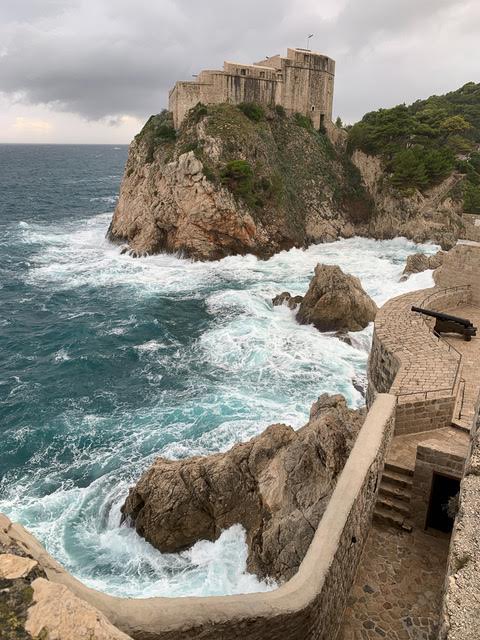
(Lovrjenac is a limestone fortress that sits just outside Dubrovnik’s city walls and overlooks the sea.)
Working while traveling
Then I started traveling, working abroad, and meeting people doing different versions of my hustle. I love stories about why people travel and what they get from it. Some of the more intriguing ones involve leaving home and never going back, splitting time between locations, or simply continuing to move. These bold moves have as many twists and turns as the sea has waves, and often dreams, hard work, love, and opportunity are the driving factors. I’ve noticed that people who figure out a lifestyle around travel and work have a certain mindset. It’s global, inquisitive, open, resourceful, passionate, and more tolerant.
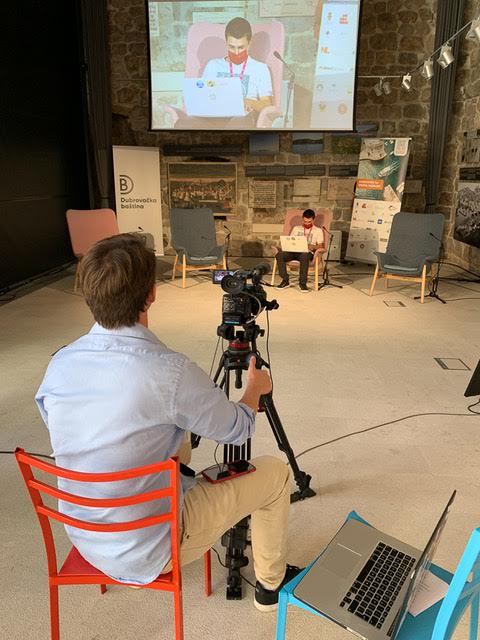
(Testing the speaker set up and camera angles before the conference.)
Who are digital nomads?
While the pandemic caused travel shutdowns and forced many workers into remote status, there’s been plenty of time to reevaluate my own life and work here in my (unexpected) new home country. What if all the people I’ve been talking to are in fact digital nomads? What if they work remotely and simply like to travel, experience different cultures and meet local people, are interested in engaging with broader communities, and want to give back? Hang on a minute, they’re just like me. My outdated stereotype was shattered. In fact, the world is embracing the positive concept of digital nomads and it’s great.
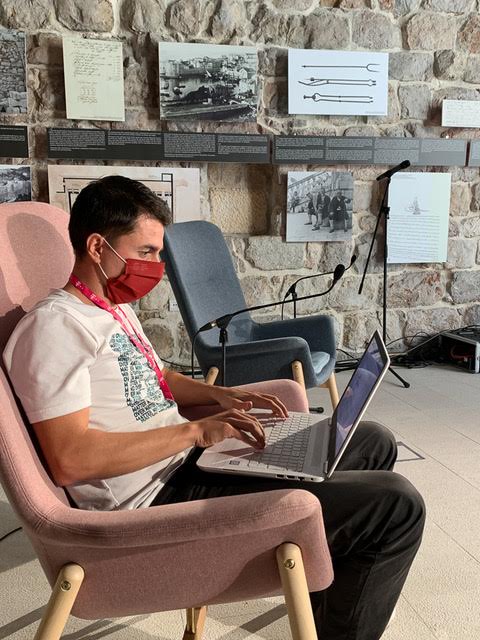
(Preparing for the first day’s agenda and panel discussions.)
Croatia’s first digital nomad conference
A marvelous opportunity is rising from the pandemic. Specifically, a handful of countries instated a digital nomad visa which allows remote workers to apply for a 1-year residency to live and work in the country. Croatia has been at the forefront and its digital nomad visa is expected to be available in early 2021.
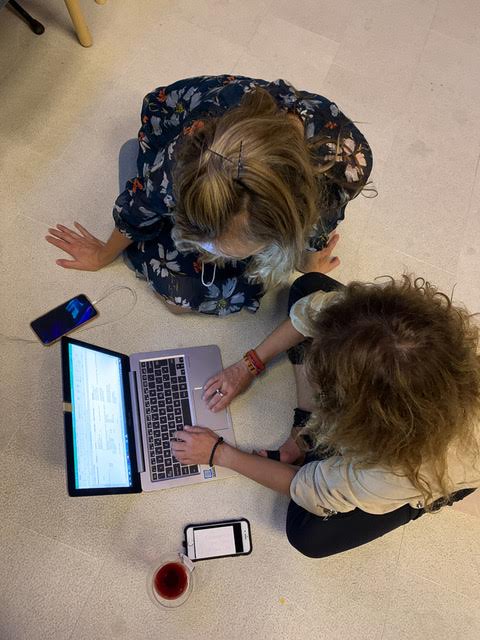
(Reviewing the conference program and final details.)
In anticipation, Croatia’s first digital nomad conference, called “Dubrovnik for Digital Nomads,” kicked off European Freelancers Week (#EFWeek2020, October 16-25) in that beautiful Dalmatian city. I had the good fortune to be on the frontlines and I worked alongside an international event team that was nothing short of rock star. To clarify, the team worked hard but we were non-paid volunteers who put together a robust two-day program that was both live and virtual.
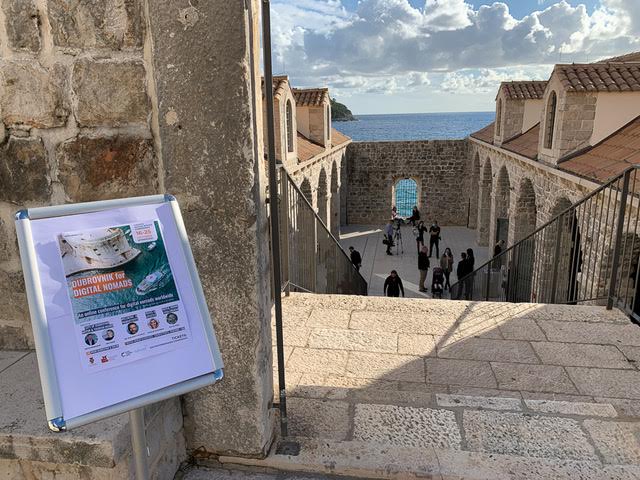
(The digital nomad conference is held at the Lazareti..)
An international team
Our team hails from Australia, Chile, Croatia, New Zealand, the UK, and the USA. All of us are in Croatia with different circumstances and reasons but we share something in common—our love for the digital nomad lifestyle and everything this beautiful country has to offer. Beyond the professional skills we brought to Dubrovnik, a range of personal pursuits reveals a depth of talent among this team that is only surpassed by unending wit.
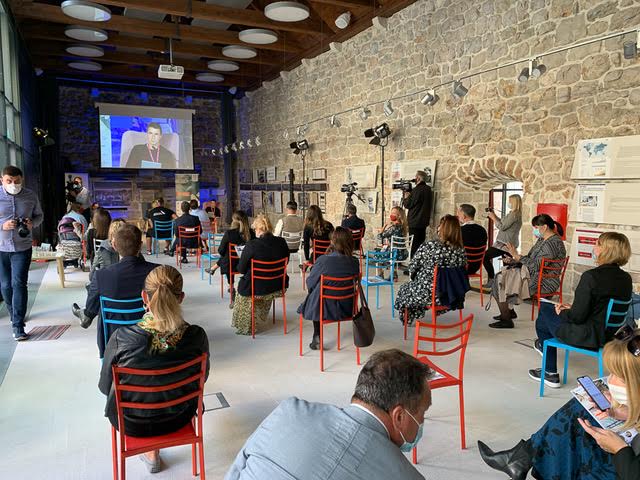
(Attendees practice social distance safety.)
One of the girls wants to start a vineyard in Chile. Another one spent a bunch of years in Cambodia and makes gorgeous wrap dresses, while another develops student education programs at the university and collaborates with international campuses. One of the guys runs a sick sailing business (in a good way) where remote workers can get the job done at sea, on a luxury yacht, with high speed internet. I want that job! Other pursuits include social enterprise work, building audio visual systems, UX coding, running coworking spaces, and operating one of Croatia’s top online news media companies. Wow. If these are the types of people Croatia is courting, I’m in excellent company.
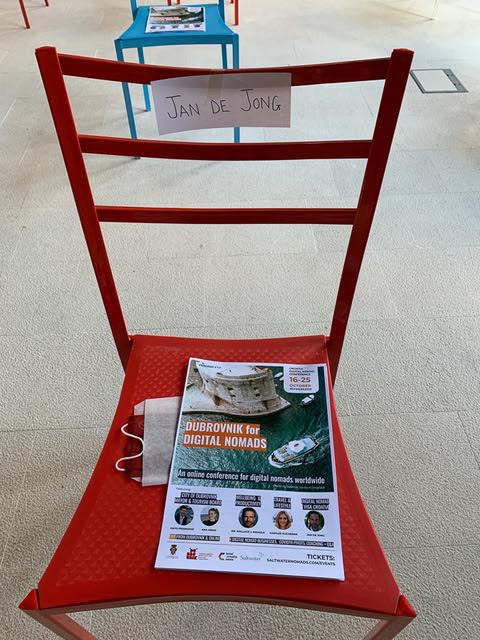
(Attendees receive a face mask with their program.}
2021’s hottest global travelers
The overriding feeling among the event team, as with the conference organizers, attendees, sponsors, and partners, is optimism for the new visa and the benefits that digital nomads can bring to communities and countries. With good understanding of who they are and reliable structures to support these people’s true needs, the lifestyle will blossom. Look for me out there waving my digital nomad flag!
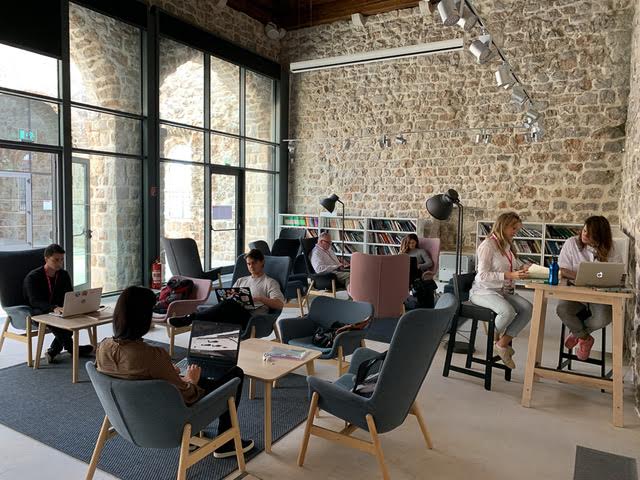
(Well-designed co-working spaces keep digital nomads efficient. This one at the Lazareti is free during Freelancer’s Week.)
Learn more about the conference and new visa at TCN’s Digital Nomads channel.
Story and photographs ©2020, Cyndie Burkhardt. www.photo-diaries.com.

(A bench outside the co-working space doubles as a WiFi enabled device to ensure fast internet speed around the premises.)
You can read more of Cyndie's nomad journey in her column, Croatia Through the Eyes of a Digital Nomad.
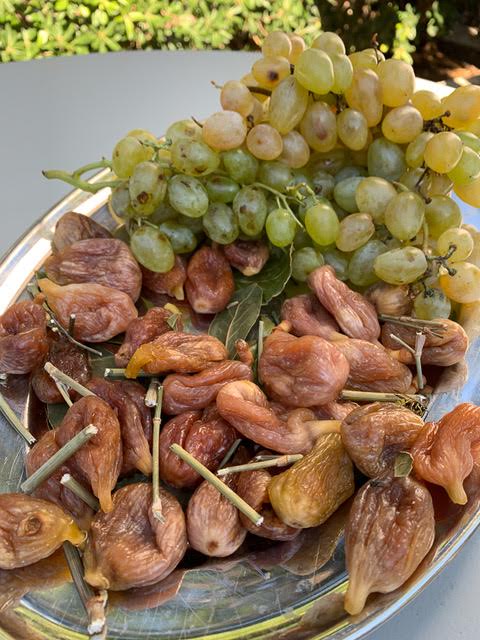
(Croatia’s natural resources include abundant fresh fruit, which surprise and delight visitors and locals alike.)
Croatia Through the Eyes of a Digital Nomad: Your Daily Dose of Vitamin Sea
October 8, 2020 - Croatia offers the best lifestyle in Europe, and with a digital nomad visa imminent, remote workers are sensing the healthy lifestyle opportunity - a lifestyle which comes with a daily dose of Vitamin Sea. Continuing our look at Croatia through the eyes of a digital nomad with Cyndie Burkhardt.
What do two Scots, two Koreans, and two Americans have in common? Love for turquoise water, spectacular coastlines, and great food—while sailing in Croatia.
When a friend mentioned sailing as his single agenda item in Croatia, it struck me as the perfect opportunity to indulge both his request and my desire for an elegant sea excursion. Walking past mega yachts docked just past Split’s Riva, I’d had numerous fantasizes about how cool it would be to board one, sail grandly through the Adriatic, and sip champagne for days, all the while following Beyoncé’s footsteps through the Adriatic and channeling my inner fabulousness. Oh yes, a trip would be booked.
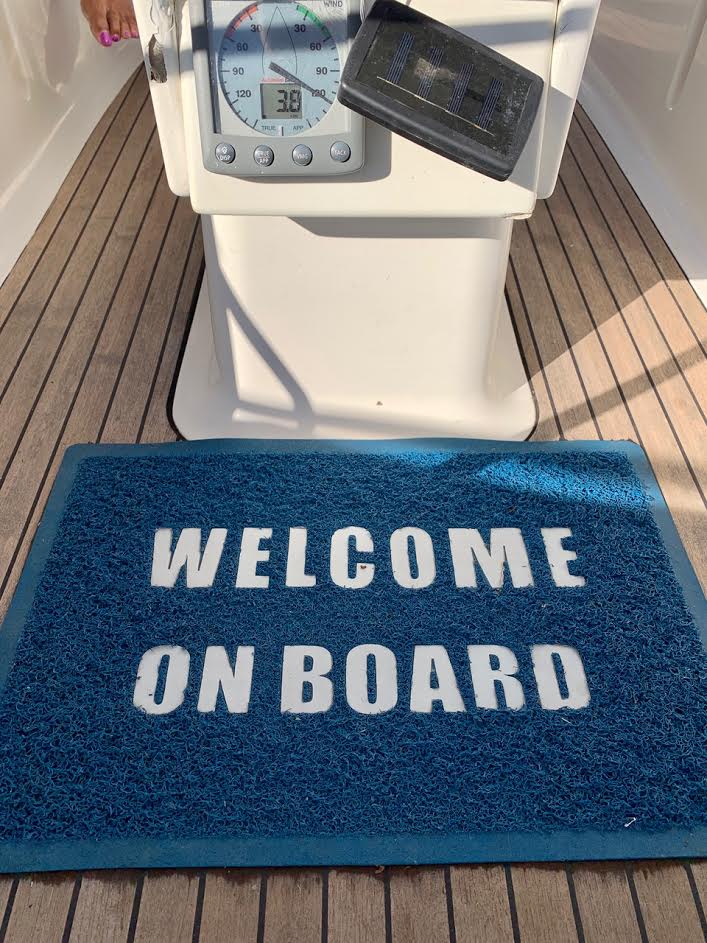
A friendly greeting awaits Nera’s guests.
Our day sail began on a ferry, in Split. The plan was to meet John and Lyn McMorland, the Scottish couple who own Sunburst Sailing, on Brač and set off from there on their 42-foot yacht, Nera. Adventure began before we ever met them. As the ferry pulled up to Brać I noticed people standing on deck. I had wanted to ride outside and I went to investigate. One of the crew said, “If you’re getting off, go now.” What? Where were we? There was no announcement. I looked up and saw a sign—Milna. Yikes, this was my stop! I told the crewman I was getting off but had to go inside and get my friend. “Hurry!” he barked. I ran inside and the boat started pulling away. We raced to the ramp, watched the gap growing between us and land, and we jumped. The crew yelled and we giggled. We were stunned at the close call but glad to have averted a second casualty this morning. The first—the friend who originally suggested sailing overslept and completely missed the ferry. We were supposed to be a threesome and now we were just two.
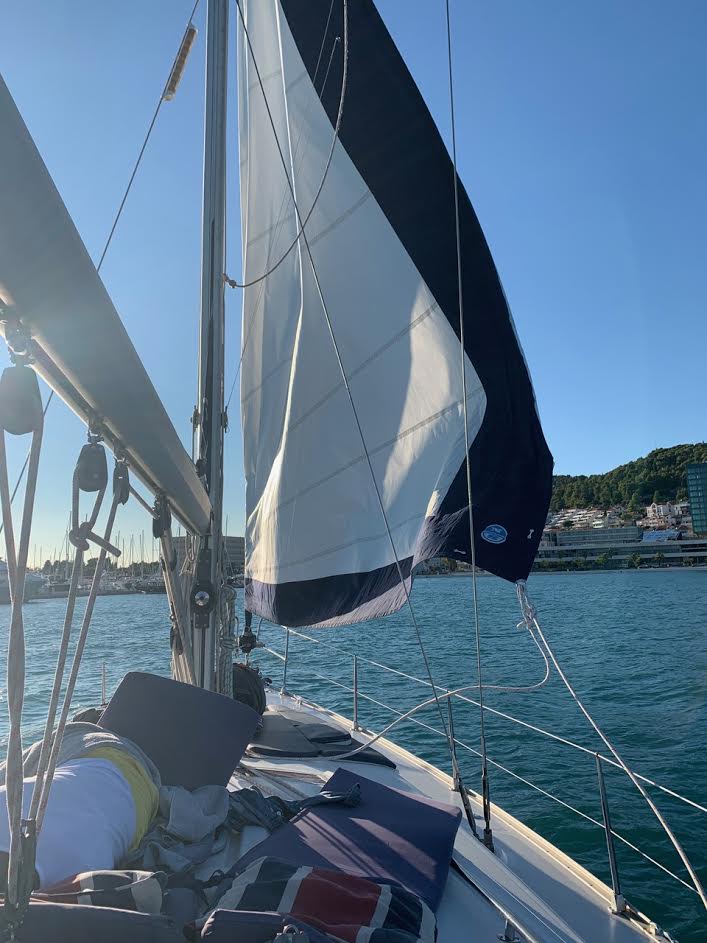
Setting sail to cruise across the Adriatic.
The Nera was docked a short distance away and Lyn greeted us as we walked over. We hopped onboard, met our companions—a newlywed Korean couple, and the yacht left. After setting sail, Lyn offered us Prosecco then went below deck to prepare fresh canapes for a mid-morning snack. Not a single cloud dotted the sky and a light wind seemed ideal for sailing. This is what I’m talkin’ about! That silly smile of sheer bliss started creeping onto my face and I wasn’t even into my swimsuit yet.
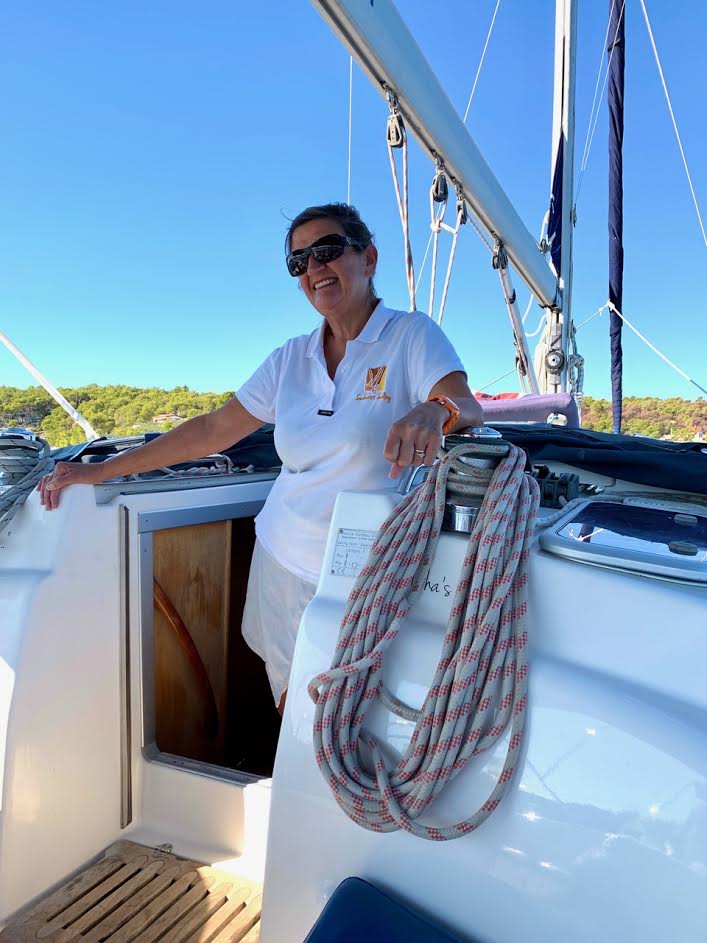
Lyn discusses a day in the life of sailing.
We stopped at several coves during the day and swam in crystal-clear water that was every shade of turquoise, sky blue, and green. Reflections from the sky and warm streaks of sunlight added gorgeous nuances of color and depth. I brought my goggles but jumped at the chance to trade up for John’s snorkel gear. Below water, a teeming bed of sea life and a rocky terrain was captivating. Above, different sounds of water and waves blended in with sightings of butterflies, bees, and seagulls.

Refreshing sips of Prosecco fill the morning ride.
Shifting from underwater explorer to sun worshiper, I settled onto a raft and felt the sun warm my body. Before long, a miniature unicorn-shaped floaty came toward me, it was holding a cup of cold Prosecco. Yesss! John grabbed my camera and captured the scene while we all laughed out loud. Back onboard, an amazing smell wafted up through the galley. John, who is a trained chef, was preparing vegetable risotto topped with Dalmatian ham for lunch. The table was silent as we all enjoyed the meal. Dessert was tiramisu followed by a finisher of rogač. Everything was fresh and delicious.
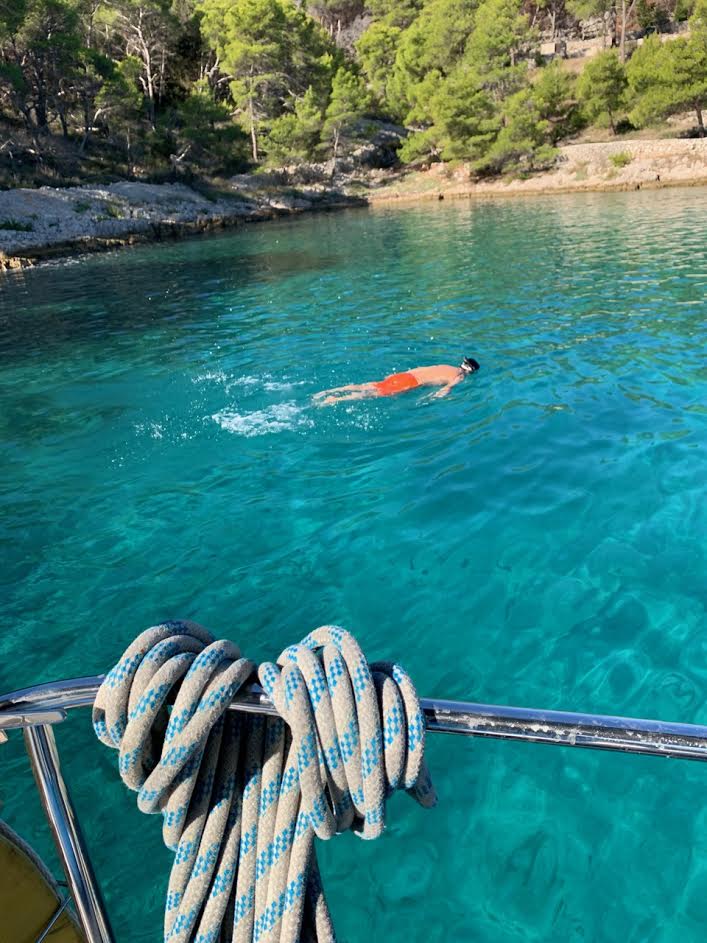
Snorkeling in a small cove.
Throughout the day we sailed past different places of interest. Mrduja is an islet that sits between Brač and Šolta. It holds a charming history concerning an annual tug of war over ownership rights to this tiny, uninhabited land. Fishing boats from both sides line up with ropes tied between them and to Mrduja itself. The spectacle is seeing who pulls the hardest. The Three Sisters Tower at Bobovišća sits on the family residence of Croatian poet Vladimir Nazor, who built it in 1937 to memorialize his three sisters.
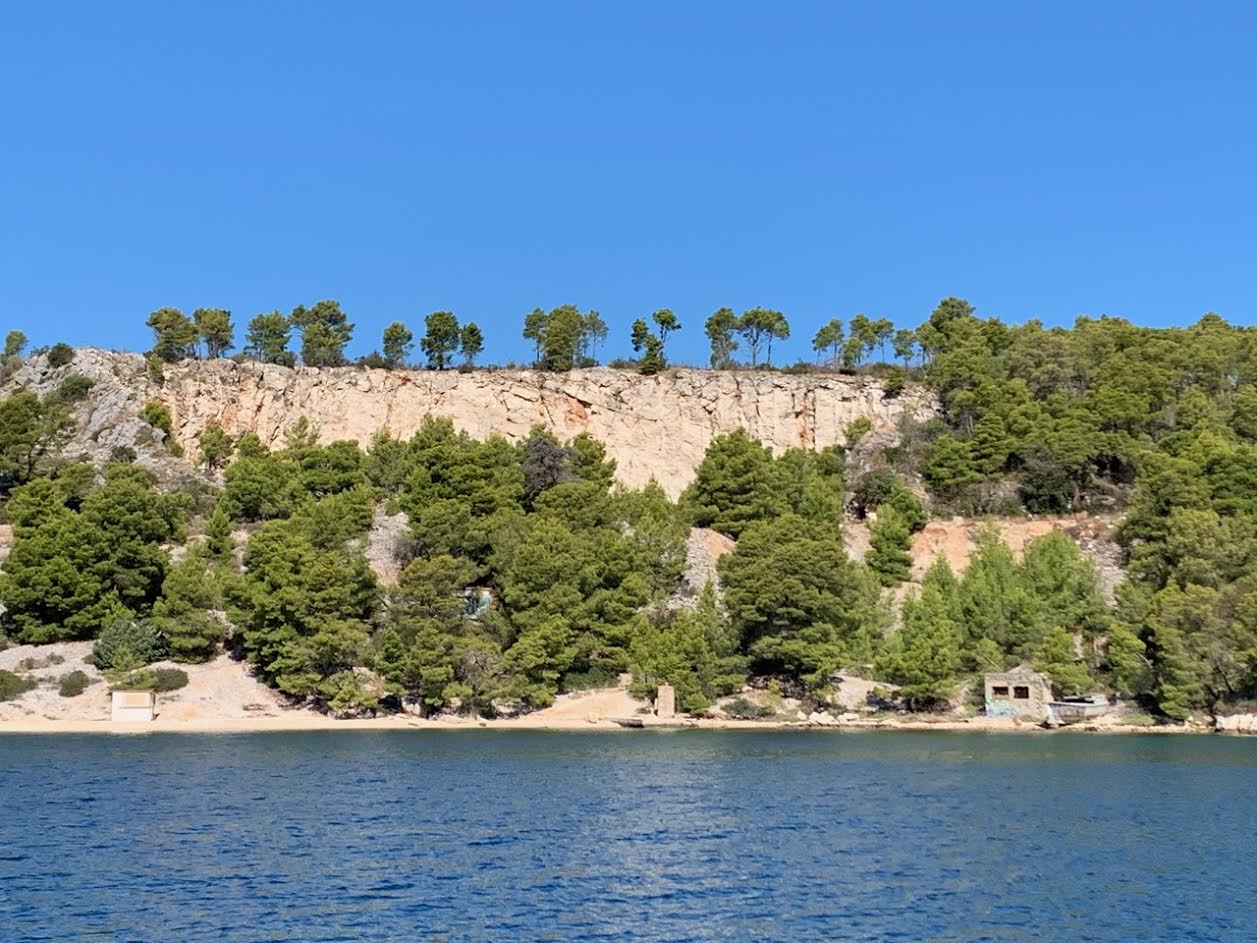
A classic Dalmatian coastline—limestone and pine trees.
Talking with John and Lyn, it’s clear they’re in love with Croatia and this sailing life. They go the extra mile to treat guests like VIPs—thinking of every detail (hot shower and fluffy towels), making the experience memorable (fully catered, Croatian food and wine), and creating an easy atmosphere (relax under the shaded canopy or on the open sunny bow). Beyond being excellent hosts, they’re a good team. They’re also people you want to share stories and a meal with. I could get used to this.
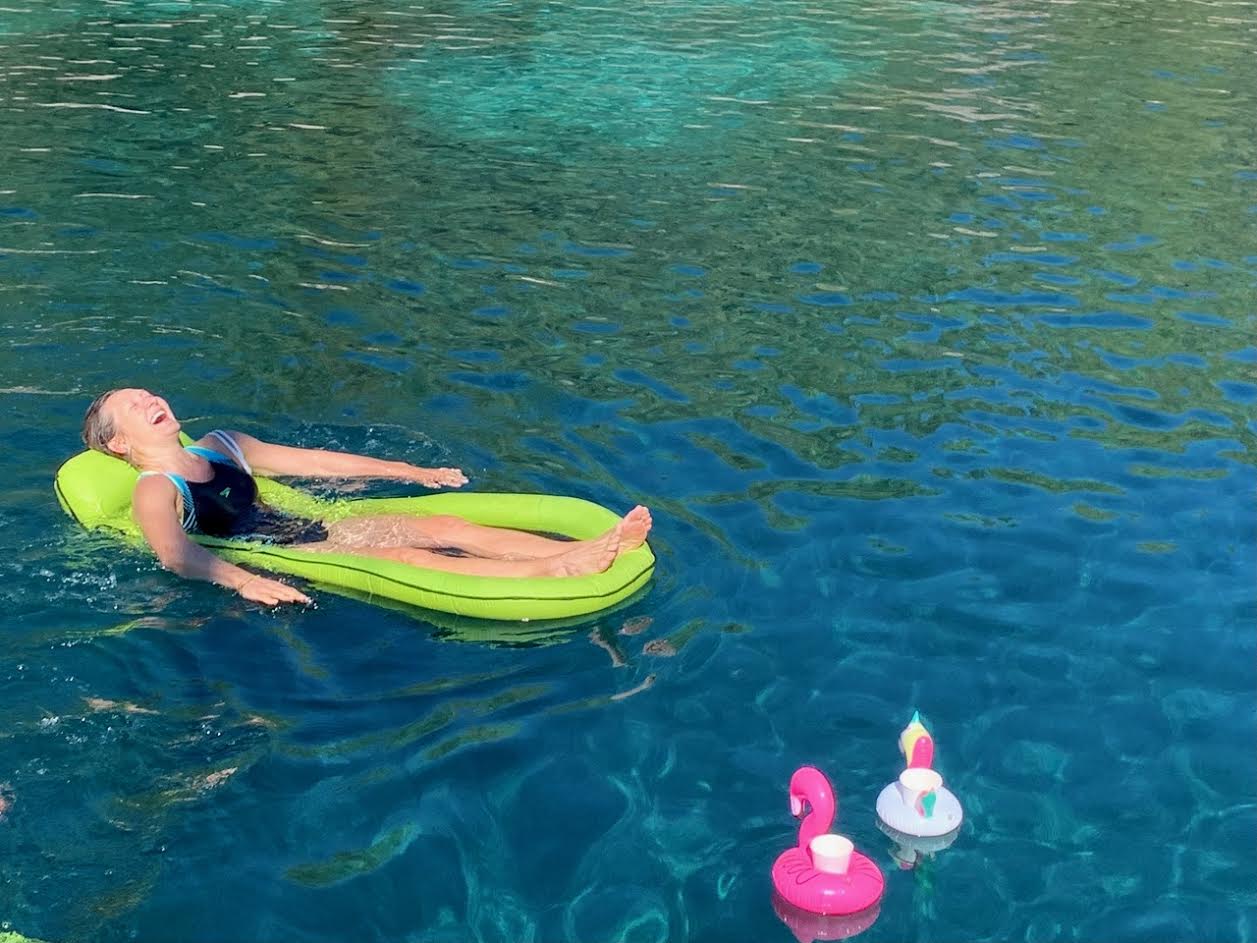
The author is served.
Lying on deck beneath full sails that blew us back to Split, I closed my eyes, filled my lungs with fresh salty air, and rocked comfortably in the undulating rhythm of the sea.
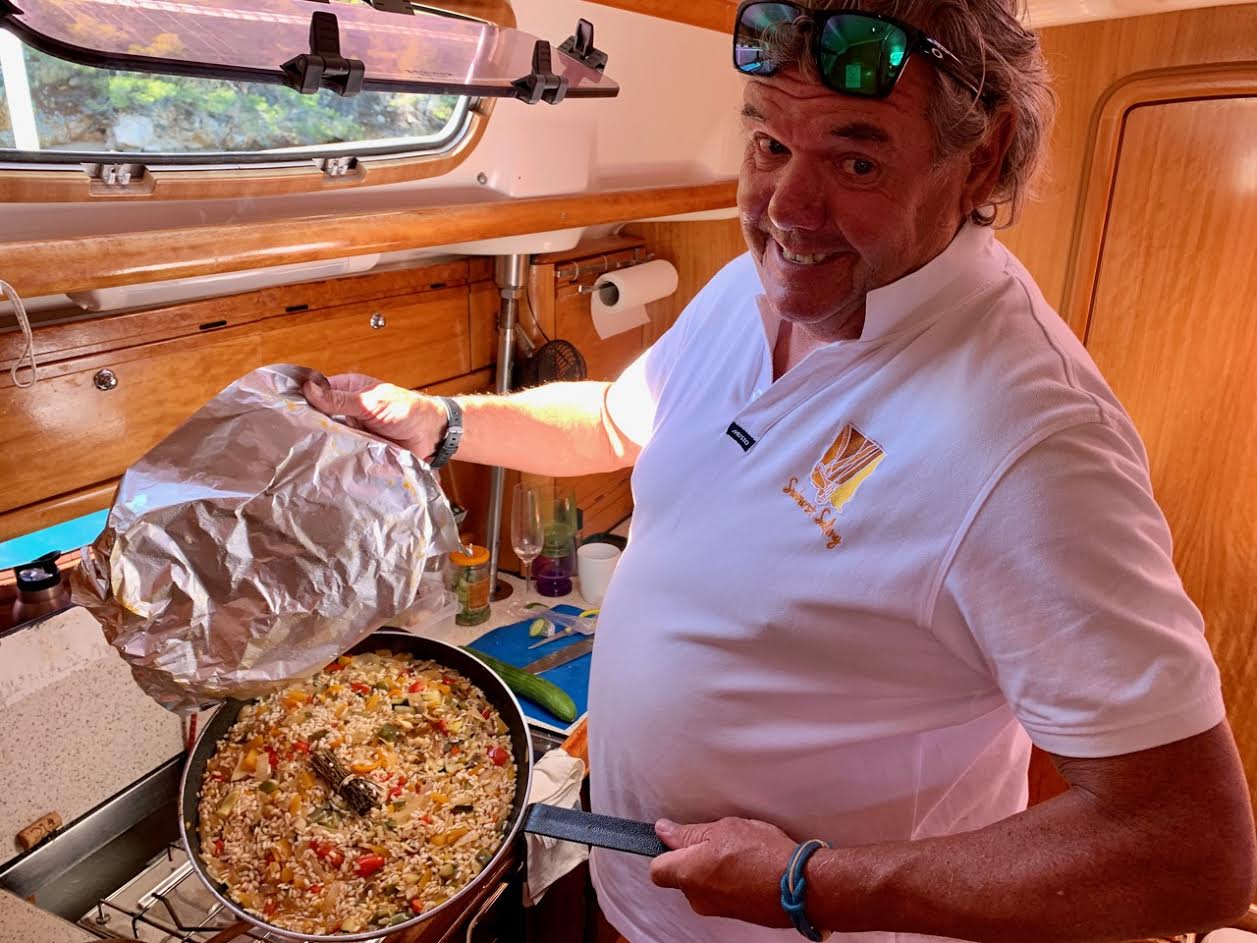
The captain in the galley preparing lunch.
A rough wave pushed us to one side and my leg shifted in the opposite direction to brace me. With that movement, my phone slid out from between my legs and tumbled toward the sea. The only thing that saved it from the depths of the Adriatic was a small lip on the edge of the boat. From his captain’s position, John immediately saw what happened and yelled, “Quick, grab it!” I was already on my feet and my heart skipped a beat as I leaned down hoping to make the catch before the next wave. I can’t even think about the alternative…
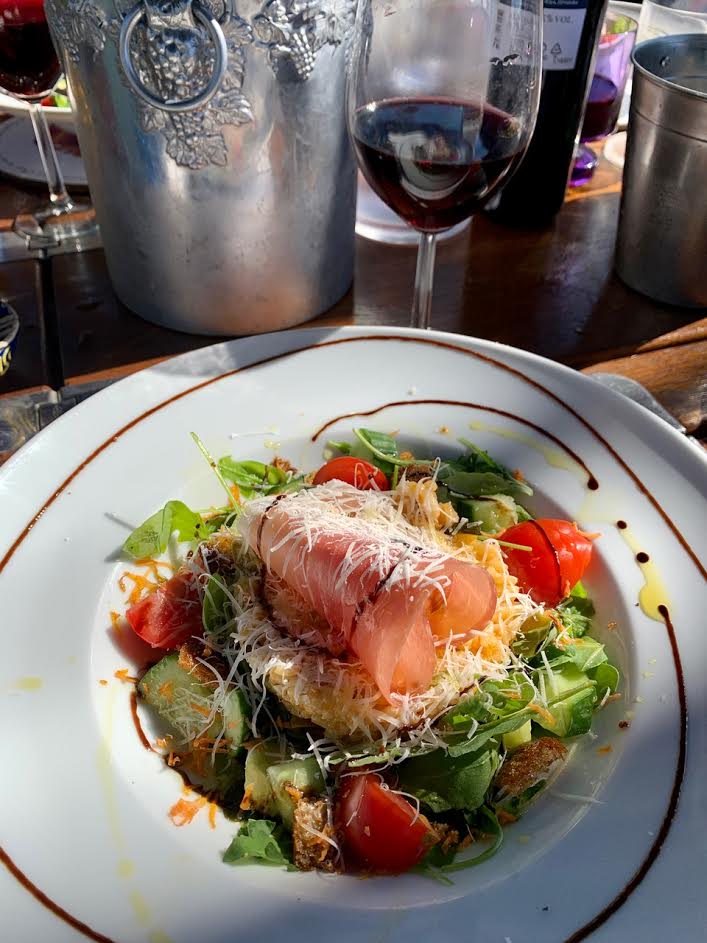
Vegetable risotto topped with Dalmatian ham.
Back in Split, John and Lyn dropped us at the yacht dock and we waved goodbye as the Nera headed back home to Brač. The yacht may be (slightly) smaller than Beyoncé’s but she’s mighty. I felt spoiled rotten and I loved every minute.
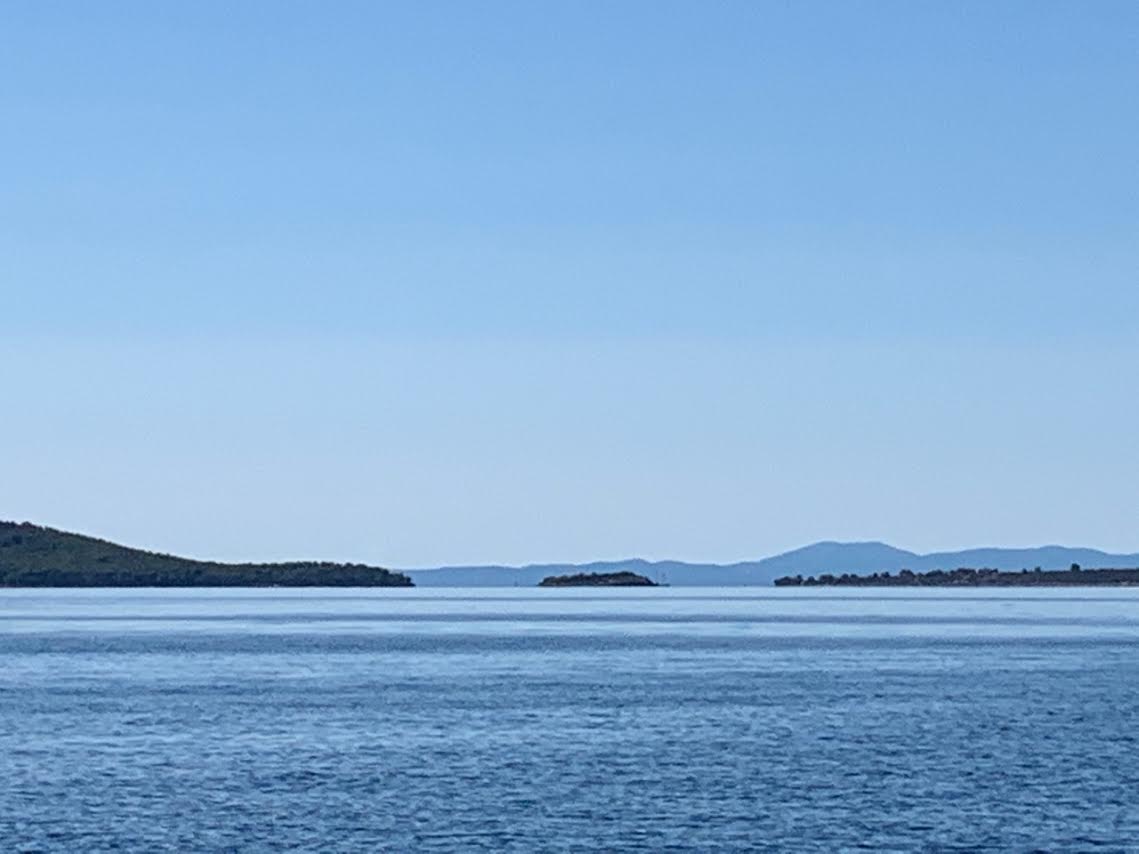
Mrduja inspires a famous annual tug of war between Brač and Šolta.
Learn more about Sunburst Sailing and schedule a tour.
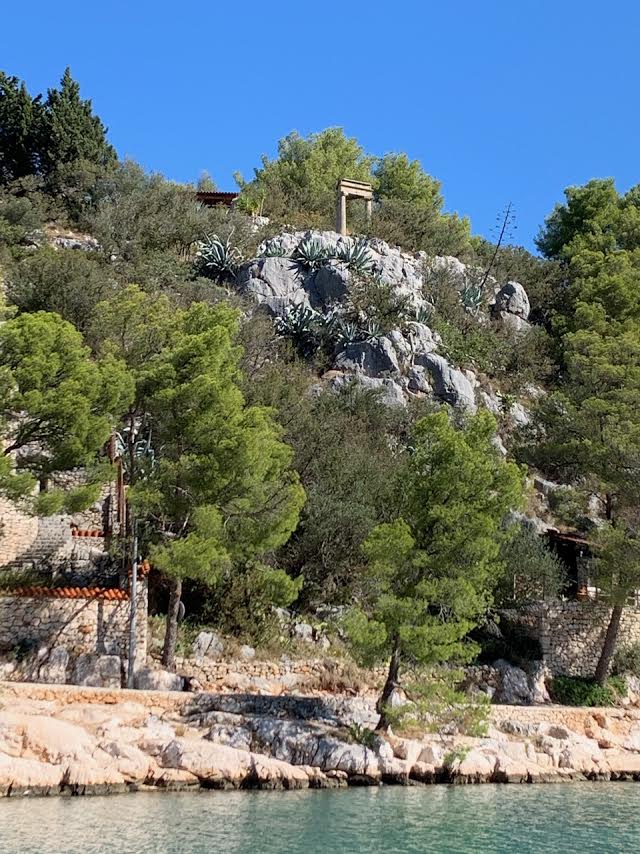
Three pillars make up the Three Sisters Tower on Bobovišća.
Story and photographs ©2020, Cyndie Burkhardt. www.photo-diaries.com.
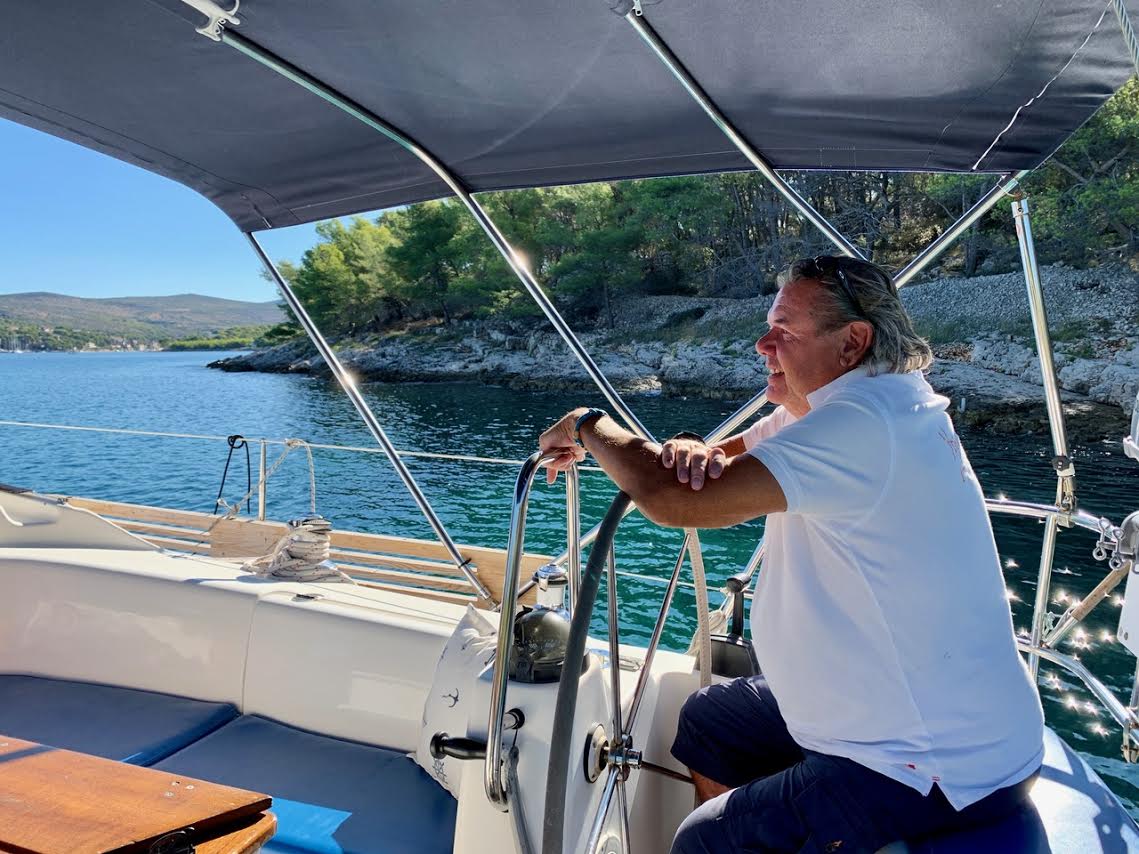
Captain John commands the wheel.
You can follow the latest from Cyndie's column, Croatia Through the Eyes of a Digital Nomad here.
For the latest news about digital nomads in Croatia, including that sought-after nomad visa, check out the dedicated TCN digital nomad news section.
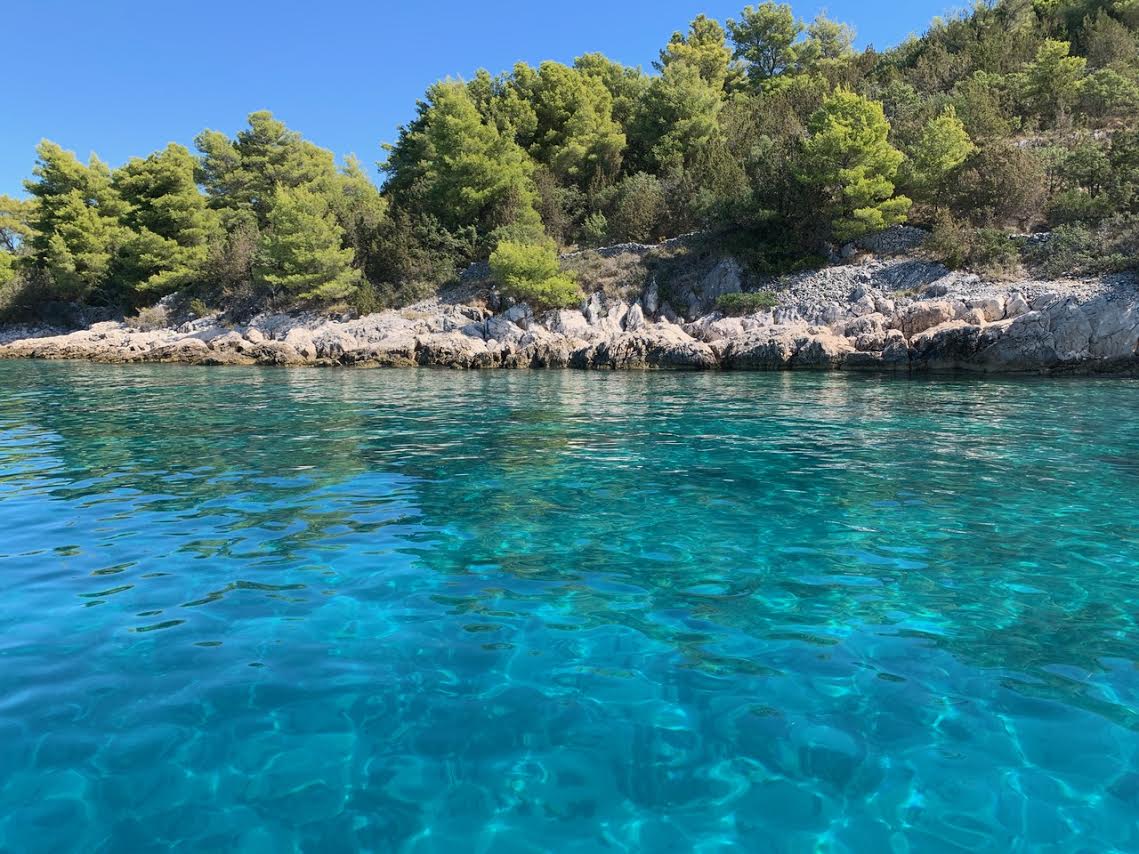
Crystal clear turquoise water twinkles.
For the latest travel info, bookmark our main travel info article, which is updated daily.
Read the Croatian Travel Update in your language - now available in 24 languages.
Croatia Through the Eyes of a Digital Nomad: Give Bees a Chance
September 22, 2020 - How does Croatia look through the eyes of a digital nomad? TCN is delighted to welcome new columnist Cyndie Burkhardt, who will be sharing her exepriences as a digtal nomad in Croatia. And where better to start - give bees a chance from the idyllic island of Šolta.
Still being a newbie in Split (I’ve lived here since March 1), I’m keen to see as much of the Dalmatian coast as possible. This time of year the islands dotting the Adriatic Sea are calling me. I’ve come to learn that many of them are known for something among Croatia’s vast natural resources and specialties. Šolta has come up several in conversations extolling its reputation for honey. That was all I needed to hear—indigenous food and Croatian culture. I was determined to visit.
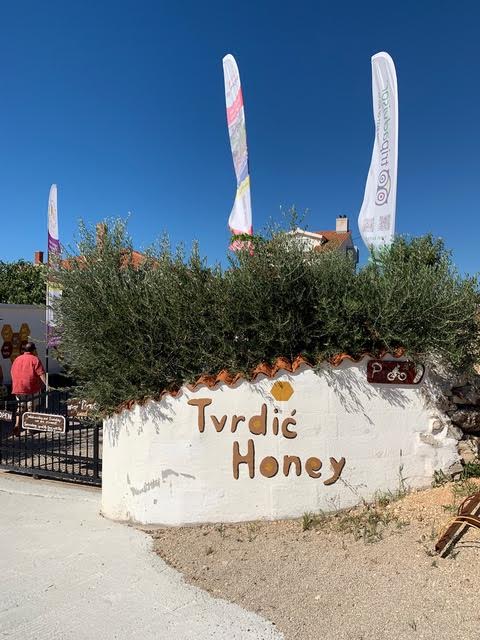
Tvrdić Honey farm
I buy local honey in every country I visit. The most intriguing so far was in Malaysia, where I was introduced to a rare treetop variety. Meaning, industrious “honey hunters,” as they’re called, literally climb to the very top of very tall trees to extract it from a hive. Malaysians claim it has exceptional nutritional value. Taste-wise, it was divine. I view honey similar to wine varietals—environment, land, and weather make it unique. I enjoy experimenting with different flavors in my morning tea, itself from a selection of loose-leaf varietals. Plus, I feel like I’m doing my body a favor. Local honey is supposed to be good for you, possessing vital nutrients that support the immune system and antioxidant benefits.
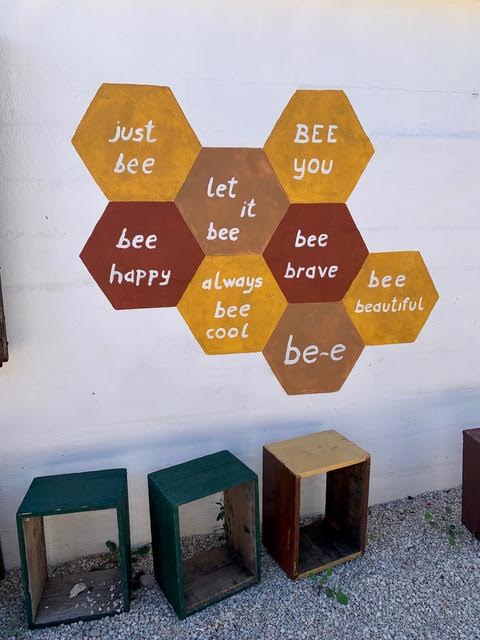
Positive messages reflect family philosophy
I found Tomislav Tvrdić, of Tvrdić Honey, and signed up for his “Give Bees a Chance” tour. I took an early boat from Split and met his father Goran straight away. The minute I saw his warm smile I knew I was in good hands. Goran is a 3rd generation beekeeper, making Tomislav the 4th. His grandfather started the bee farm in 1934 and his father kept it going. Where those two dabbled with it outside of their regular jobs, Goran took it on full-time. He’s clearly passionate about “the animals,” as he calls the bees.
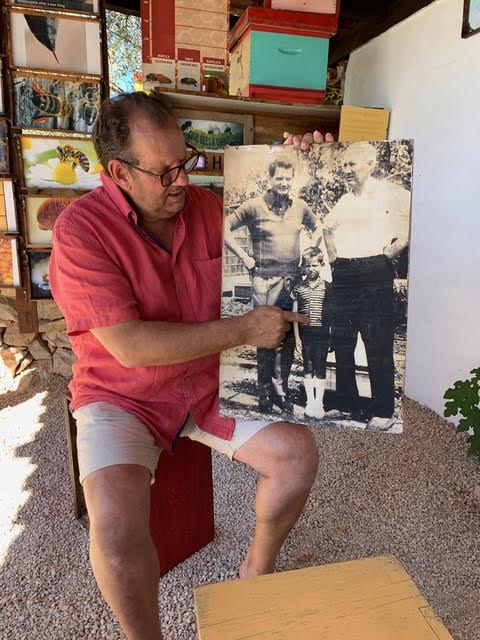
Three generations of Tvrdić family; Goran center
We arrived at the farm he went straightaway to “the store,” a huge fig tree that I could see towering above the roof. When he came bounding down the ladder, he extended his hand with a basket full of the ripe fruit. We chowed down right there, along with his wife and Tomislav, while chatting about bees and the family’s history.
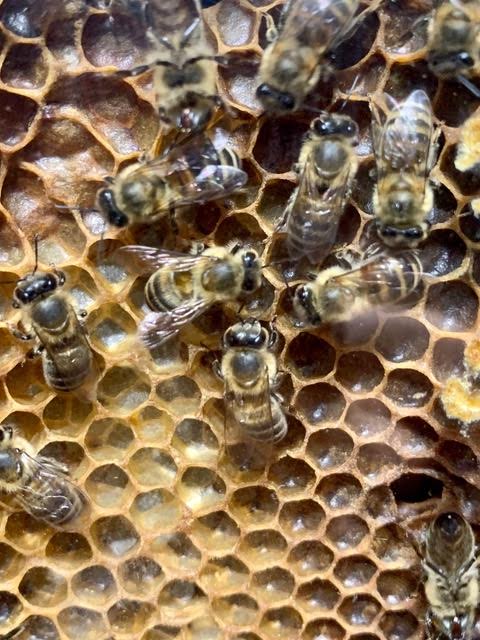
Worker bees in a honeycomb
By the time we moved into the learning center, a modest setup of chairs and props across the yard, we’d established a comfortable conversation. Goran told me about the six products that bees produce. Who knew there were so many? Their bodies emit poison (think bee stings), royal jelly (a top-of-the-line secretion that worker bees deposit directly into the queen as her premium food source), and propolis, a natural antibacterial. Bees also make honey, pollen, and wax.
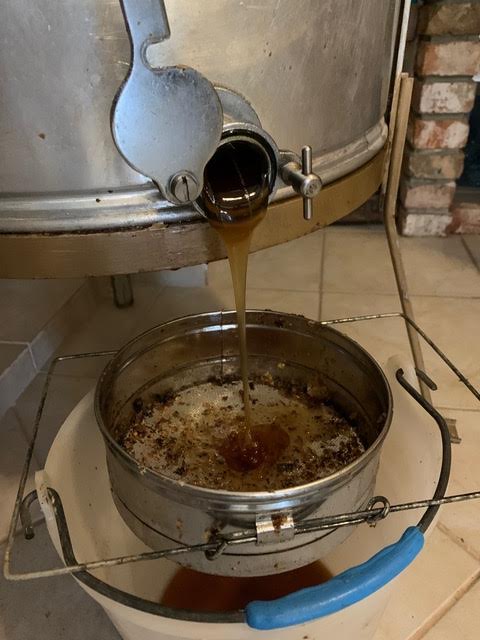
Fresh honey spun from a comb
Goran is a purist and stores pollen in the freezer for maximum freshness and effectiveness. He also warned me to check the temperature of my tea before adding honey. It needs to be under 105°F (40.5°C). Violate these rules and you’ll kill the product benefits, making it pointless to use them. To him and many others, bee products are medicine, especially Manuka honey from New Zealand. That one is used by doctors for antiviral, anti-inflammatory, and antioxidant properties. At prices up to €200 per jar (roughly $237), you would hope that claims of wound healing, cold and flu prevention, and curing oral ailments are accurate.
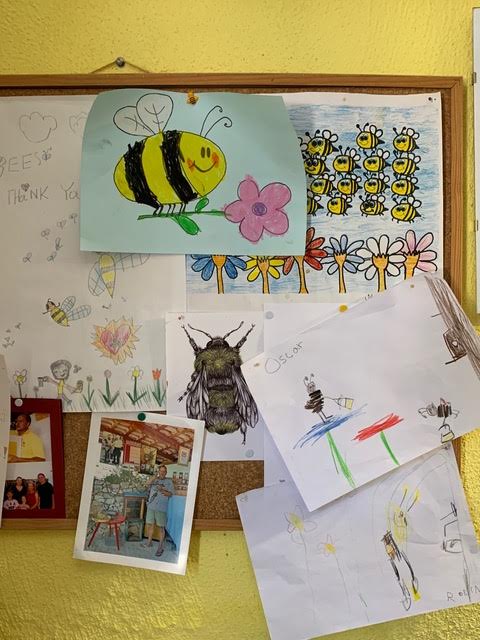
Community board with photos, notes, and kid’s drawings
I’m not a fan of bee pollen. The stuff I’ve eaten was crunchy and pungent, limiting its use to blended foods to make it palatable. Ok for a smoothie, but not my morning tea. Goran fetched a container from the freezer. This pollen was soft and delicious. It nearly melted in my hand and each tiny nugget had a rich, complex taste. Our fingers stained slightly yellow from pinching little bites, similar to the color of turmeric. Mind blown. This, I could eat.
After discussing bee sex and the lifespans of the queen, drones, and workers, Goran and I went into the shop to see a colony at work and taste gooey honey right off the comb.
I noticed a creamy looking product that turned out to be a blend of pollen and honey. In that combination pollen doesn’t need to be frozen. Great, I needed to try it! Šolta’s rosemary grows everywhere and naturally lends itself to ružmarin domaći šoltanski med (rosemary homemade Šolta honey), one of Tvrdić’s main products along with kadulja (sage) honey. Yum. My backpack filled up quickly.
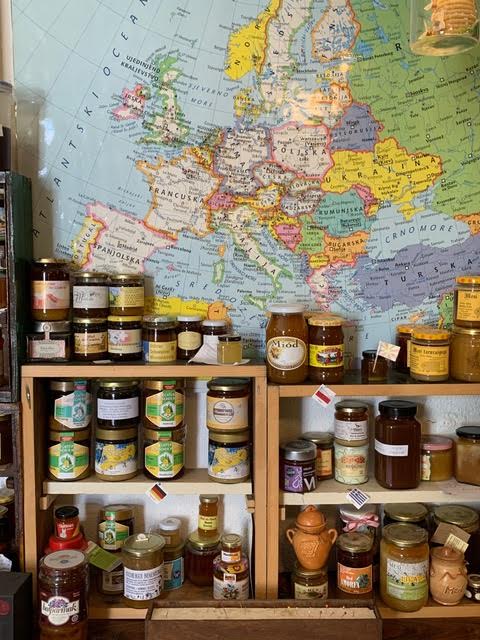
Visitors from around the world send honey from their countries
Inside Tvrdić’s part shop, part museum, I gazed at world maps and a massive, international honey collection while chatting away. I felt a nice connection with Goran and his family and I completely lost track of time. I prepared to leave and apologized for keeping him well past our scheduled tour as the clock ticked toward 2 hours. Oops!
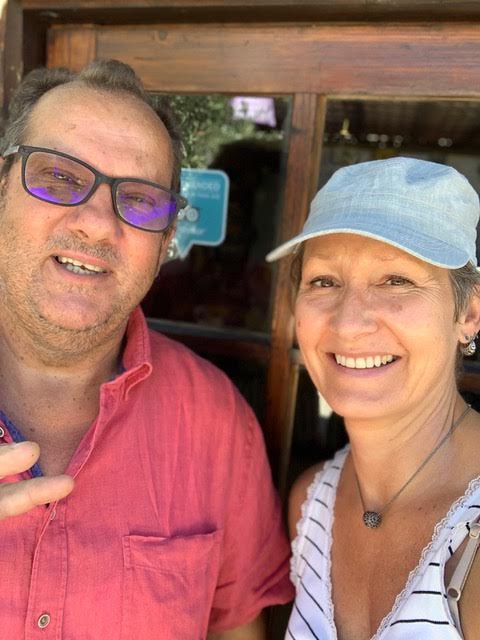
Goran Tvrdić and the author
He seemed completely relaxed and ok with it. For him, life is about doing what you’re passionate about, meeting people, and authentic local experiences. The many cards and personal notes throughout the shop, including drawings from kids and gifts that people have sent from around the world, prove that Goran is onto something. In a final gesture, he sent me off with a container of fresh figs. Could this guy be any nicer? This must be the famous Croatian hospitality I’ve read about.
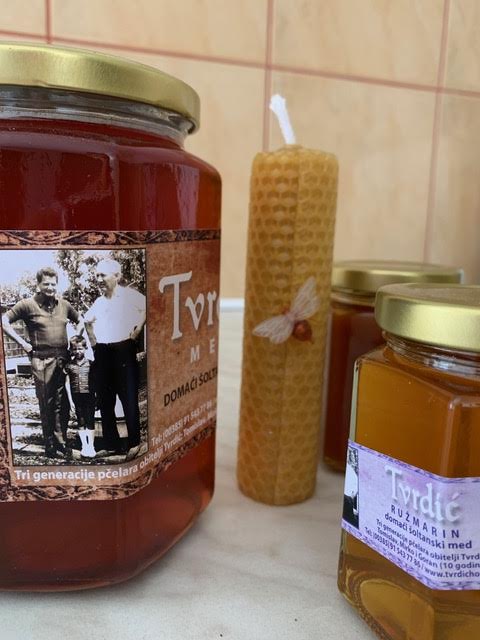
Tvrdić Honey products
When Goran first picked me up at the ferry, he asked about my plans for the day. I mentioned swimming and then lunch after our tour. He dropped me off at a small inlet with clear blue water and pointed out a couple of dining spots. When it was time to eat I headed to Pasarela and settled in for a plate of crni rizot, the traditional Croatian dish I’ve been wanting to try since I arrived here six months ago. It was absolutely delicious. I washed it down with my new favorite drink, Pelinkovać and tonic.
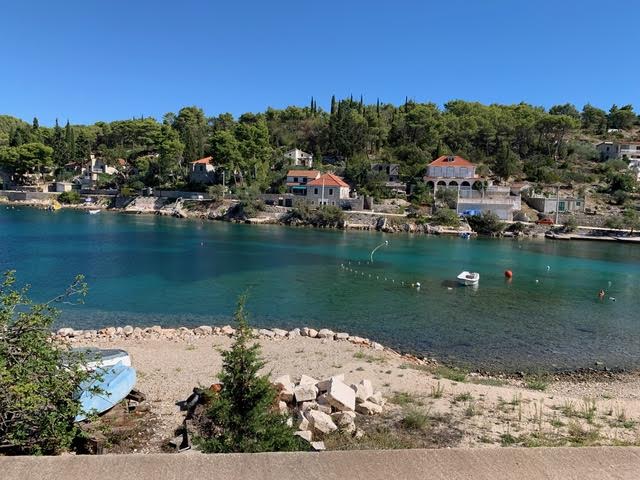
Swimming inlet
I wore a silly grin on my face for the rest of the afternoon, touched by the kindness of strangers and soaking up my perfect Croatian day.
Learn more about Tvrdić Honey and schedule a tour.
Story and photographs ©2020, Cyndie Burkhardt. www.photo-diaries.com.
You can follow the latest from Cyndie's column, Croatia Through the Eyes of a Digital Nomad here.
For the latest news about digital nomads in Croatia, including that sought-after nomad visa, check out the dedicated TCN digital nomad news section.


